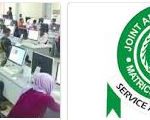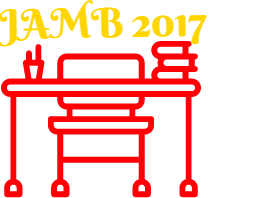Jamb Economics Syllabus 2019 | Jamb Syllabus for Economics
Welcome to the official page for the 2019 Economics, which we attempt to show you the Jamb Economics Syllabus 2019 and Jamb Syllabus for Economics so that you will start studying. The important of the syllabus can never be over emphasized, it serve as a guide towards your preparation for the forth coming Jamb exams commencing on February 2018.

One thing which student need so much is the syllabus and this we have done by providing you with the updated information on Jamb Economics Syllabus 2020 and Jamb Syllabus for Economics.
You can also read our Jamb Syllabus for use of English too and remember that the use of English is an important subject in Utme Exam.
Your level of preparedness towards this year’s Jamb will determined the kind of result which you will come out with and one tool that will help you to prepare so well for the forth coming Jamb examination is your ability to use the syllabus as the right tools for studies.
Studies have shown that those who study with the syllabus makes good grade form their examination because they are actually guided.
How to Get Jamb Economics Syllabus 2020
You can either get the our updated Jamb Economics syllabus by texts or Jamb Syllabus for Economics via pdf. Any of the method which you choose will still give you the updated Jamb Syllabus for you to study conveniently.
A syllabus is a tool which serves as a map/guide to give you direction and help you have a focus in your task. The syllabus is is very vital for you to have and study for your exam along side with your text books thus the need to make Jamb Syllabus for Economics available to serve as a working tool for smooth studies while preparing for Jamb.
Download Jamb Economics Syllabus 2020 and Jamb Syllabus for Economics
Another way of getting the syllabus is through pdf format which you hav e to download and save it on yor phone so you can visit it anytime you wants without going online to visit this site again. To this syllabus, you have follow all relevant l inks to download the syllabus which we have uploaded in a pdf format.
Many candidates preparing for this exam actually need to have this Jamb Economics Syllabus 2020 | Jamb Syllabus for Economics by downloading it. The cost of the download is free and you will not be charge for downloading.
Without wasting time, here is the syllabus for you by texts
ECONOMICS
GENERAL OBJECTIVES
The aim of the Unified Tertiary Matriculation Examination (UTME) syllabus in Economics is to prepare the candidates for the Board’s examination. It is designed to test their achievement of the course objectives, which are to:
1.demonstrate sufficient knowledge and understanding of the basic concepts, tools and their general applications to economic analysis;
2.identify and explain the basic structure, operations and roles of the various economics units and institutions (national and international);
3.describe major economic activities – production, distribution and consumption;
4.identify and appraise the basic economic problems of society;
5.develop the competence to proffer solutions to economic problems.
DETAILED SYLLABUS for Jamb Economics Syllabus and Jamb Sylabus for Economics
TOPICS/CONTENTS/NOTES
1.Economics as a science
i. Basic Concepts:
Wants, Scarcity, choice, Opportunity cost, Rationality, production, distribution, consumption etc
ii. Economic problems of: what, how and for whom to produce
OBJECTIVES
Candidates should be able to:
(i) compare various concepts in economies and their applications;
(ii) interpret graphs/schedules in relation to the concepts;
(iii) identify economic problems;
(iv) proffer solutions to economic problems
TOPICS/CONTENTS/NOTES
2. Economics Systems
a. Types: free enterprise, centrally planned and mixed economies
b. Solutions to economic problems under different economic systems
c. Contemporary issues in economic systems (e.g. economic reforms, deregulation etc)
OBJECTIVES
Candidates should be able to:
(i) compare the various economic systems;
(ii) apply the knowledge of economic systems to contemporary issues in Nigeria
(iii) proffer solutions to economic problems in different economic systems.
TOPICS/CONTENTS/NOTES
3. Methods of Economic Analysis
a. Scientific Approach:
i. inductive and deductive methods
ii. positive and normative reasoning
- Basic Tools
i. tables, charts and graphs
ii. measures of central tendency: mean, median and mode, and their applications.
iii. measures of dispersion; variance, standard deviation, range and their applications;
iv. merits and demerits of the tools.
OBJECTIVES
Candidates should be able to:
(i) distinguish between the various forms of reasoning;
(ii) apply these forms of reasoning to real life situations;
(iii) use the tools to interpret economic data;
(iv) analyse economic data using the tools;
(v) assess the merits and demerits of the tools.
TOPICS/CONTENTS/NOTES
4.The Theory of Demand
a.i. meaning and determinants of demand
ii. demand schedules and curves
iii. the distinction between change in quantity demanded and change in demand.
b. Types of demand: Composite, derived, competitive etc
c.Elasticity of demand: – determinants, measurements, nature and applications (e.g. revenue).
d. Effects of changes in the determinants (price, income and cross elasticities).
OBJECTIVES
Candidates should be able to:
(i) identify the factors determiningdemand;
(ii) interpret demand curves from demand schedules;
(iii) differentiate between change in quantity demanded and in demand;
(iv) compare the various types of demand and their interrelationships;
(v) relate the determinants to the nature of elasticity;
(vi) compute elasticities;
(vii) interpret elasticity coefficients in relation to real life situations.
TOPICS/CONTENTS/NOTES
5.The Theory of Consumer Behaviour in Jamb Economics Syllabus and Jamb Syllabus for economics
a. Basic Concepts:
i. utility (cardinal, ordinal an marginal utilities)
ii. value in use.and value in exchange
iii. indifference curve and budget line.
b.Diminishing marginal utility and the law of demand.
c.Consumer equilibrium using the indifference curve and marginal analyses.
d.Effects of shift in me budget line and the indifference curve.
e.Consumer surplus and its applications.
OBJECTIVES
Candidates should be able to:
(i) appraise the various utility concepts;
(ii) apply the law of demand using the marginal utility analysis;
(iii) use indifference curve and marginal analyses to determine consumer equilibrium;
(iv) associate the income and substitution effects;
(v) apply consumer surplus to real life situations.
TOPICS/CONTENTS/NOTES
6.The Theory of Supply
a. i. Meaning and determinants of supply
ii. Supply schedules and supply curves
iii. the distinction between change in quantity supplied and change in supply
b.Types of Supply: Joint/complementary, competitive and composite
c.Elasticity of Supply: determinants, measurements,
nature and applications
OBJECTIVES
Candidates should be able to:
(i) identify the factors determining supply;
(ii) interpret supply curves from supply schedules;
(iii) Differentiate between change in quantity supplied and change in supply;
(iv) Compare the various types of supply and their interrelationships;
(v) Relate the determinants to the nature of elasticity;
(vi) Compute elasticity coefficients;
(vii) Interpret the coefficients in relation to real live situations.
TOPICS/CONTENTS/NOTES
7. The Theory of Price Determination
a.The concept of market and price
b.Functions of the price system
c.i. Price determination under a free market
ii. Price legislation and its effects
d.The effects of changes in supply and demand on equilibrium price and quantity
OBJECTIVES in Jamb Economics Syllabus
Candidates should be able to:
(i) express the concepts of market and price;
(ii) examine the functions of the price system;
(iii) evaluate the effects of government interference with the price system;
(iv) differentiate between minimum and maximum price legislation;
(v) interpret the effects of changes in supply and demand on equilibrium price quantity.
TOPICS/CONTENTS/NOTES
8.The Theory of Production
a.Concepts of production and their interrelationships (TP, AP, MP and the law of variable proportion).
b.Scale of Production:Internal and external economies of scale and their implications.
c.Production functions and returns to scale
d.Producers’ equilibrium isoquant- isocost and marginal analyses.
OBJECTIVES of this Jamb Economics Syllabus
Candidates should be able to:
(i) relate TP, AP and MP with the law of variable proportion;
(ii) compare internal and external economies of scale in production and their effects;
(iii) identify the types of production functions
(iv) compare the different types of returns to the scale and their implications;
(v) determine the firm’s equilibrium position using the isoquant- lsocost and marginal analyses.
TOPICS/CONTENTS/NOTES
9.Theory of Costs
a.The concepts of costs:Fixed, Variable average and marginal
b.Accountants’ and economists’ notions of cost
c.Short-run and long-run costs
d.The marginal cost and the supply curve of firm.
OBJECTIVES
Candidates should be able to:
(i) interpret the various cost concepts
(ii) differentiate between accountants’ and economists’ notions of costs
(iii) interpret the short-run and long-run costs curves
(iv) establish the relationship between marginal cost and supply curve.
TOPICS/CONTENTS/NOTES
10. Market Structure
a.Perfectly competitive market:
i. Assumptions and characteristics;
ii. Short-run and long-run equilibrium of a perfect competitor;
b.Imperfect Market:
i. Pure monopoly, discriminatory monopoly and monopolistic competition,
ii. Short-run and long-run equilibrium positions.
c.Break-even/shut-down analysis in the various markets.
OBJECTIVES
Candidates should be able to:
(i) analyse the assumptions and characteristics of a perfectly competitive market;
(ii) differentiate between short-run and long-run equilibrium of a perfectly competitive firm;
(iii) analyse the assumptions and characteristics of imperfect markets;
(iv) differentiate between the short-run and long-run equilibria of imperfectly competitive firm;
(v) establish the conditions for the break-even/shut down of firms.
TOPICS/CONTENTS/NOTES
11. National Income
a.Concepts: GNP, GDP, NI etc
b.National Income measurements and their Problems
c.Uses of national incomes estimates
d.The circular flow of income (three-sector model)
e.The multiplier concept.
f.Elementary theory of income determination and equilibrium national income.
OBJECTIVES
Candidates should be able to:
(i) identify the major concepts in national income;
(ii) compare the different ways of measuring national income;
(iii) examine their problems;
(iv) assess the uses and limitations of national income estimates;
(v) interpret the circular flow of income using the three-sector model;
(vi) calculate the multipliers;
(vii) evaluate their effects on equilibrium national income.
TOPICS/CONTENTS/NOTES
12. Money and Inflation
a.Types and functions of money
b.Demand for money and the supply of money
c.Quantity Theory of money (Fisher equation)
d.Inflation: Types, measurements, effects and control
OBJECTIVES
Candidates should be able to:
(i) differentiate between the types and functions of money;
(i) determine the factors affecting the demand for and the supply of money;
(iii) identify the components in the quantity theory of money;
(iv) examine the causes and effects of inflation;
(v) calculate the consumer price index;
(vi) interpret the consumer price index;
(vii) examine ways of controlling inflation.
TOPICS/CONTENTS/NOTES
13. Banking
a.Types and functions of banks
b.The creation of money
c.Challenges facing the banking industry in Nigeria (reforms, consolidation)
d.The role of banks in economic development
e.Monetary policy and its instruments.
OBJECTIVES
Candidates should be able to:
(i) compare the types of banks and their functions;
(i) trace the money-creation process and factors affecting it;
(iii) appraise the challenges facing the banking industry;
(iv) examine the role of banks in economic development;
(v) examine the various monetary policy instruments and their effects.
TOPICS/CONTENTS/NOTES
14. Public Finance
a.Meaning and objectives
b.Sources of government revenue (taxes royalties, etc)
c.Principles of taxation
d.The effects of public expenditure
e.Government budget and public debts
f.Revenue allocation and resource control in Nigeria
OBJECTIVES
Candidates should be able to:
(i) identify the objectives of public finance;
(ii) compare the various sources of government revenue
(iii) analyse the principles of taxation;
(iv) examine the effects of public expenditure on the economy;
(v) examine the types and effects of budgets;
(vi) highlights the criteria for revenue allocation in Nigeria and their impact.
TOPICS/CONTENTS/NOTES
15. Economic Growth and Development
a.Meaning and scope
b.Indicators of growth and development
c.Factors affecting growth and development
d.Problems of developmentin Nigeria
e.Developing planning in Nigeria.
OBJECTIVES
Candidates should be able to:
(i) distinguish between economic growth and development;
(ii) highlight the indicators of growth and development;
(iii) identify the factors affecting growth arid development;
(iv) assess the problems of development in Nigeria;
(v) examine the role of planning in development;
TOPICS/CONTENTS/NOTES
16. Agriculture in Nigeria
a.The role of agriculture in economic development;
b.Characteristics and problems;
c.Effects of agricultural policies;
d.Instability in agricultural income (causes, effects and solutions)
OBJECTIVES
Candidates should be able to:
(i) identify the characteristics and problems of agriculture;
(ii) assess the role of agriculture in economic development;
(iii) appraise some agricultural policies;
(iv) evaluate the causes and effects of instability in agricultural income.
TOPICS/CONTENTS/NOTES
17. Industry and Industrialization
a.Concepts and effect of locationand localization of industry in Nigeria;
b.Problems of ndustrialization strategies (e.g. export promotion, import substitution etc)
c.SMEs and economic development in Nigeria
OBJECTIVES
Candidates should be able to:
(i) differentiate between location and localization of industry;
(ii) identify the factors influencing the location and localization of industry;
(iii) examine the problems of industrialization;
(iv) appraise some industrialization strategies;
(v) examine the role of industry in economic development.
TOPICS/CONTENTS/NOTES
18. Petroleum and the Nigerian Economy
a.Development of the petroleum industry in Nigeria;
b.Contributions of petroleum to the Nigerian economy;
c.Linkage effects;
d.Upstream/downstream activities.
OBJECTIVES
Candidates should be able to:
(i) trace the development of the petroleum industry in Nigeria;
(ii) assess the contribution of petroleum to the Nigerian economy;
(iii) establish the linkages between the petroleum and other sectors;
(iv) analyse the environmental effects of exploration activities in Nigeria;
(v) distinguish between the upstream and downstream activities;
(vi) suggest ways of controlling the effect of oil exploration.
TOPICS/CONTENTS/NOTES
19. Business Organizations
a.Private enterprises (e.g. sole- proprietorship, partnership, limited liability companies and cooperative societies)
b.Problems of private enterprises;
c.Public enterprises;
d.Privatization and Commercialization as solutions to the problems of public enterprises.
OBJECTIVES
Candidates should be able to:
(i) compare the types and basic features of private business organization;
(ii) assess the financing and management problems of business organizations;
(iii) identify the features of public enterprise;
(iv) differentiate between privatization and commercialization;
(v) compare the advantages and disadvantages of privatization and commercialization;
TOPICS/CONTENTS/NOTES
20. Population
a.Meaning and theories;
b.Census: importance and problems.
c.Size and growth: overpopulation, under- population and optimum population.
d.Structure and distribution;
e.Population policy and economic development
OBJECTIVES
Candidates should be able to:
(i) analyse the features of some population theories:
(ii) examine the relevant of the theories to Nigeria;
(iii) examine the uses and limitations of census data;
(iv) identify determinants of the size, composition and growth of population;
(v) analyse the structure and distribution of population;
(vi) appraise government population policy in Nigeria.
TOPICS/CONTENTS/NOTES
21. International Trade
a.Meaning and basis for international trade (absolute and comparative costs etc)
b.Balance of trade and balance of payment: problems and corrective measures;
c.Composition and direction of Nigeria’s foreign trade;
d.Exchange rate: meaning, types and determination.
OBJECTIVES
Candidates should be able to:
(i) examine the basis for international trade.
(ii) differentiate between absolute and comparative advantages;
(iii) distinguish between balance of trade and balance of payments and their corrective measures;
(iv) highlight the problems of balance of payments and their corrective measures;
(v) examine the composition and direction of Nigeria’s foreign trade;
(vi) identify the types of exchange rates;
(vii) examine how exchange rates are determined.
Get your How to Score High in Jamb Ebook Here

TOPICS/CONTENTS/NOTES
22. International Economic Organization
Roles and relevance of international organization e.g. ECOWAS, AU, EU, OPEC, ECA, IMF, EEC, OECD, World Bank, IBRD, WTO, ADB and UNCTAD etc to Nigeria.
OBJECTIVES
Candidates should be able to:
(i) identify the various economic organizations and their functions;
(ii) evaluate their relevance to the Nigerian economy
TOPICS/CONTENTS/NOTES
23.Factors of Production and their
Theories
a.Types, features and rewards;
b. Determination of wages, interest and profits;
c..heories: marginal productivity theory of wages and liquidity preference theory;
d.Factor mobility and efficiency;
e.Unemployment: types, causes and solutions.
OBJECTIVES in Jamb Economics Syllabus and Jamb Syllabus for Economics
Candidates should be able to:
(i) identify the types; features and rewards of factors;
(ii) analyse the determination of wages, interest and profits;
(iii) interpret themarginal productivity of liquidity preference theories
(iv) examine factors mobility and efficiency;
(v) examine he types and causes of unemployment in Nigeria;
(vi) suggest solutions to unemployment in Nigeria.
Hope you have been informed about Jamb Economics Syllabus 2020 and how to get Jamb Syllabus for Economics either by text or through pdf download and we believe that you will study with the Jamb Economics syllabus 2020.
Do you face any challenge in Jamb and you want to share it here, please kindly use the comment box below
Please share this post


Be the first to comment